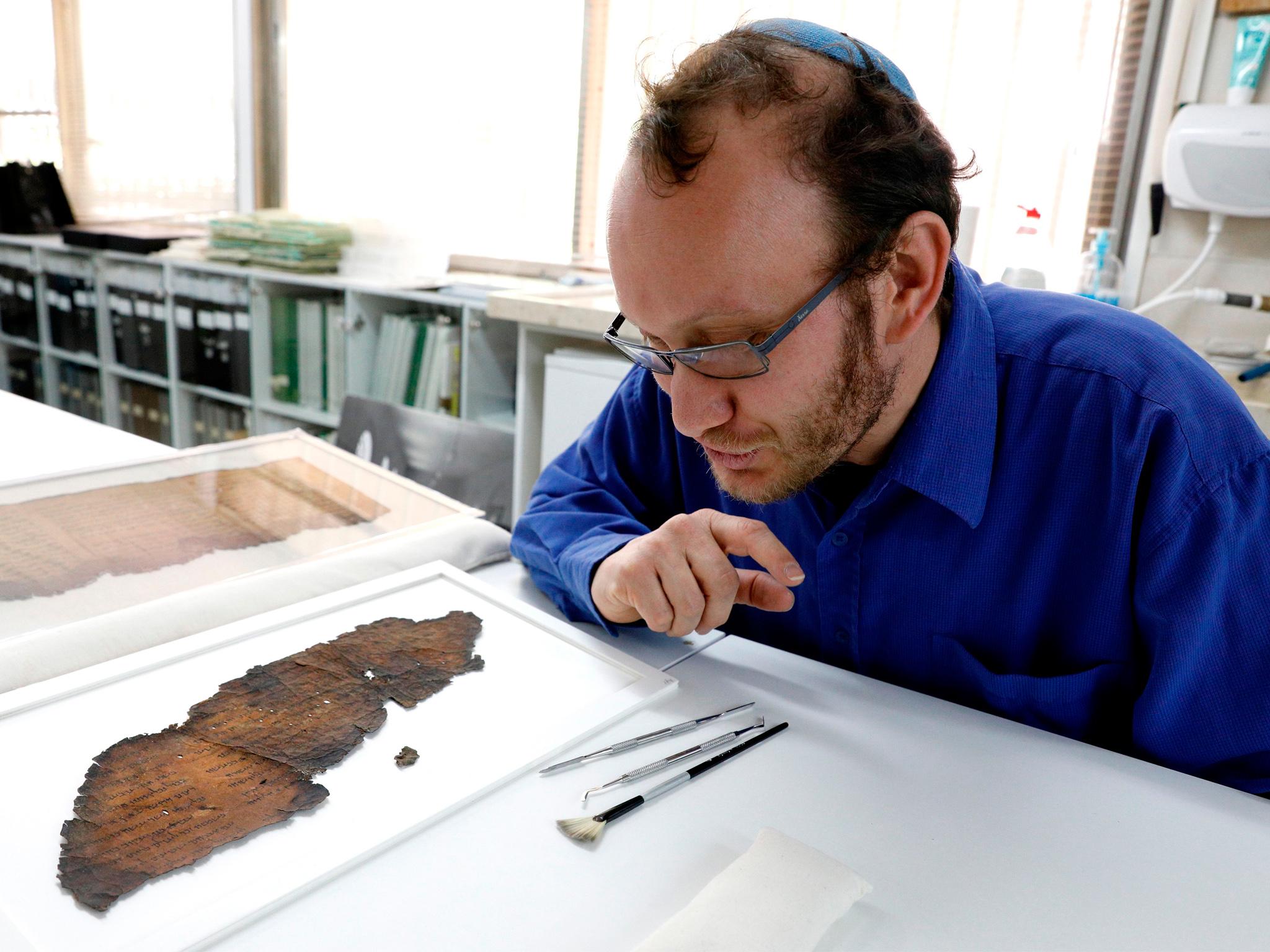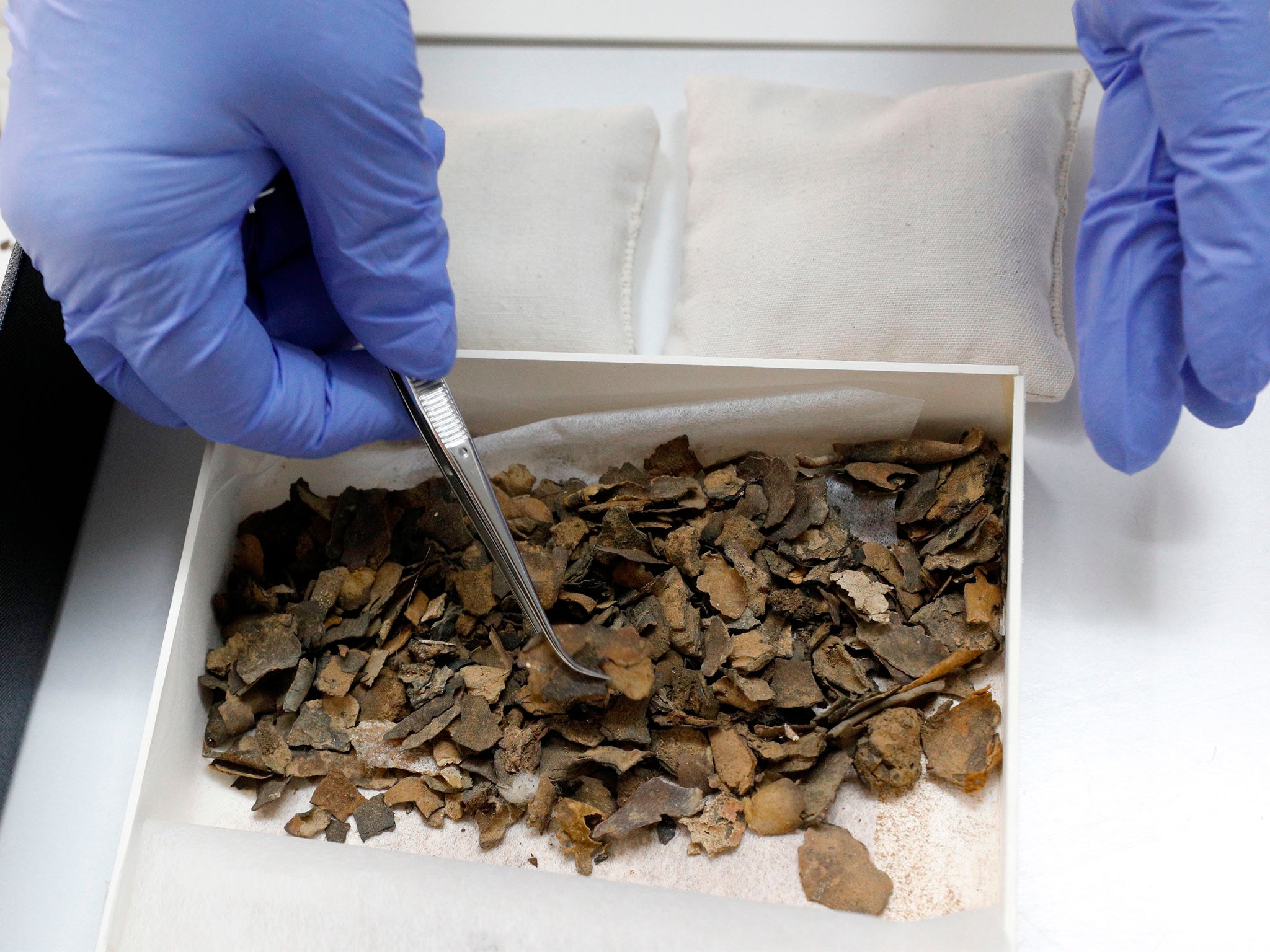Dead Sea Scrolls: Hidden writing discovered on ancient manuscript using Nasa imaging technology
One fragment of ancient Hebrew handwriting hints at the existence of an unknown text

Hidden writing on fragments of the Dead Sea Scrolls has been discovered by researchers using advanced imaging technology originally developed for NASA.
The pieces of manuscript, many of which appear blank to the naked eye, are being analysed for the first time since they were unearthed by archaeologists in the 1950s.
One fragment had letters written in an ancient Hebrew script which could belong to an unknown text.
Others have been matched to the books of Deuteronomy and Leviticus, a section of the Great Psalms Scroll containing Psalm 147, and a text in the Temple Scroll giving instructions for how to conduct services.
The fragments, roughly around 1.5cm by 1cm in size, were presented during an international conference held in Jerusalem to mark the 70th anniversary of the discovery of the scrolls.
“Usually scholars are dealing with Dead Sea Scrolls materials after they’ve been cleaned and treated. These fragments were never cleaned and treated,” said Oren Ableman, a researcher at the Dead Sea Scrolls Unit of the Israel Antiquities Authority.

Using an infrared microscope connected to a computer, he sifted through a box of fragments recovered from Cave 11 in 1956.
“With the very first fragment, I saw a letter and knew there was something there. That was the initial moment of excitement,” Mr Ableman said.
The fragments were then photographed using multispectral imaging as part of the decade-long project to digitise the Dead Sea Scrolls.

Mr Ableman believes one piece with paleo-Hebrew writing dates back to the late Second Temple period.
"What was exciting about this particular fragment is that I could tell that the handwriting was not identical to other fragments of this type of script," he said.
"That leads me to believe we are dealing with a manuscript that we didn't know about."
The Dead Sea Scrolls were first discovered by Bedouin shepherds in 1946 in caves at Wadi Qumran in the West Bank.
In February last year archaeologists discovered a new cave containing potter, broken scroll storage jars and one blank parchment.
Join our commenting forum
Join thought-provoking conversations, follow other Independent readers and see their replies
Comments